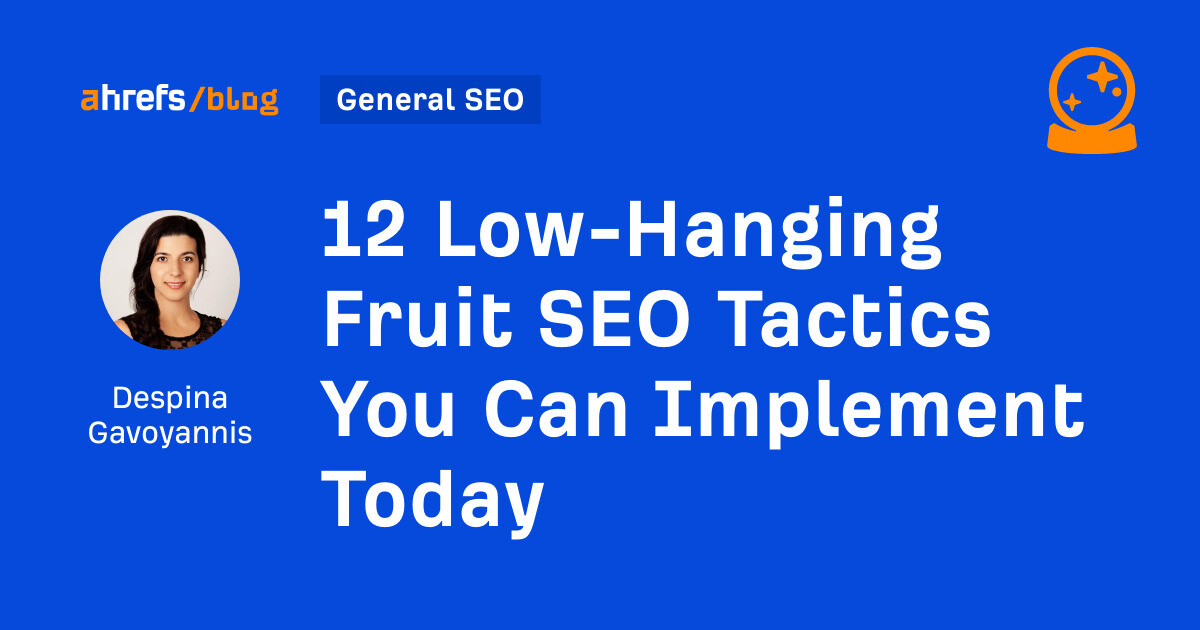12 Low-Hanging Fruit SEO Tactics You Can Implement Today

However, by focusing on closing content gaps with competitors who are relevant to your industry, you can steal their traffic and improve your own search engine rankings.
One strategy to steal competitor’s traffic is to analyze the content that they are ranking for and create similar, but better, content on the same topic. By providing more comprehensive information, better visuals, or a more user-friendly layout, you can attract users who were previously visiting your competitor’s site.
For example, if your competitor is ranking for a keyword related to “best budgeting apps,” you can create a detailed guide comparing different budgeting apps, including pros and cons, pricing, and user reviews. By providing valuable information that your competitor may have missed, you can attract users who are searching for that specific topic.
Another strategy is to identify keywords where your competitors are ranking in featured snippets and optimize your content to also appear in the featured snippet. By providing direct answers to user queries and structuring your content in a way that is easily scannable by search engines, you can increase your chances of ranking in featured snippets and stealing traffic from your competitors.
Overall, by identifying and closing content gaps with your competitors, you can improve your SEO performance, attract more organic traffic, and stay ahead in the race for search engine rankings. These quick wins can have a significant impact on your overall SEO strategy and help you achieve maximum results with minimum effort. Content gap analysis is a crucial aspect of content strategy and SEO. It involves identifying areas where your content is lacking compared to your competitors and filling those gaps to improve your overall performance. However, there are instances where certain topics may not be worth pursuing due to various reasons. In such cases, it is important to skip those topics and move on to the next one that offers more potential for success.
One effective way to identify content gaps and improve your website’s performance is through the process of updating content with declining traffic in the last 6 months. This approach involves analyzing pages that have experienced a decrease in traffic over a specific period and making strategic updates to improve their performance. By addressing issues such as poor keyword optimization, shallow topical coverage, and intent misalignment, you can revitalize underperforming content and drive significant traffic gains.
It is important to note that content updates do not always require a complete rewrite. In many cases, minor adjustments and additions can have a significant impact on a page’s performance. By following a structured approach to updating content, you can achieve impressive results, as demonstrated by a case study where a client saw a significant boost in organic traffic, keyword breadth, and conversions after making strategic content updates.
In addition to updating content with declining traffic, another effective strategy is to rewrite old pages with low-traffic performance. This approach involves identifying pages that have consistently low traffic and rewriting them to improve their performance. By changing the angle, adding new information, or addressing gaps in the existing content, you can breathe new life into underperforming pages and drive increased traffic and engagement.
Furthermore, consolidating pages that are cannibalizing each other can also help improve your website’s overall performance. Keyword cannibalization occurs when multiple pages on your site rank for the same keyword and compete with each other. By identifying instances of keyword cannibalization and consolidating multiple pages into a single, comprehensive piece of content, you can avoid diluting your site’s authority and improve your chances of ranking higher in search results.
Lastly, redirecting high-value links pointing to broken pages is a simple yet effective way to preserve authority and improve your website’s SEO performance. By identifying and redirecting links that are pointing to broken pages to high-value pages on your site, you can ensure that your website maintains its authority and continues to rank well in search results.
In conclusion, content gap analysis is a critical aspect of content strategy and SEO. By implementing strategies such as updating content with declining traffic, rewriting old pages, consolidating pages, and redirecting high-value links, you can identify and fill content gaps, improve your website’s performance, and drive increased traffic and engagement. By following a structured approach to content analysis and optimization, you can achieve significant results and position your website for long-term success. One of the most valuable assets for any website is the number and quality of links pointing to it. These links not only drive traffic but also play a crucial role in determining the authority and visibility of a website in search engine rankings. However, managing these links can be a daunting task, especially for large websites with hundreds of pages.
Fortunately, tools like the Opportunities report can help website owners identify and prioritize high-value links pointing to their site. By accessing this report, website owners can quickly identify 404 pages on their website with high-value links, allowing them to prioritize redirects and prevent authority leakage.
In addition to managing existing links, website owners can also use the Opportunities report to build internal links for new content. Internal linking is a powerful SEO strategy that helps search engines understand the structure and hierarchy of a website. By adding internal links between content on their website, website owners can show search engines which pages they want to prioritize. The Opportunities report provides a pre-filtered view of potential internal links that can be built, making it easy for website owners to identify and prioritize internal linking opportunities.
Another important aspect of link management is optimizing anchor text. Anchor text is the clickable text that is used to link to a webpage. By optimizing anchor text with relevant keywords, website owners can improve the SEO value of their internal links. The Opportunities report provides a pre-filtered view of internal links with generic or over-optimized anchor text, allowing website owners to identify and modify anchor text to improve SEO performance.
Furthermore, website owners can use the Opportunities report to close link gaps with competitors. By analyzing the top competitors in their niche, website owners can identify sites that are linking to competitors but not to them. This information can be used to build a targeted outreach list and secure high-quality backlinks from authoritative websites.
Lastly, the Opportunities report can help website owners convert unlinked brand mentions into high-quality links. Brand mentions in publications are valuable for brand awareness, but without a link, they offer little SEO value. The Opportunities report can identify publications that mention a brand but do not link to it, allowing website owners to reach out to authors and request a link to their website.
In conclusion, link management is a critical aspect of SEO that can have a significant impact on a website’s authority and visibility. By using tools like the Opportunities report, website owners can identify, prioritize, and optimize their links to improve their SEO performance and drive more traffic to their site.
Fix any critical technical issues
Technical fixes are essential for maintaining a healthy website and improving SEO. With technology constantly evolving, it’s crucial to stay on top of any issues that may arise.
Whether it’s upgrading technology, fixing broken integrations, or adapting to changes in web performance best practices, there’s always something that needs attention. The Opportunities report provides a convenient way to monitor the technical health of your website and prioritize critical issues that require fixing.
By accessing the Opportunities report, you can quickly identify the most important errors from your latest website audit. This pre-filtered view ensures that you address high-impact issues without wasting resources on low-impact tasks.
The report covers a range of issues related to pages, links, content, performance, sitemaps, and more. It also provides helpful advice and tips on how to resolve each issue effectively.
Final thoughts
Optimizing a website for search engines involves a variety of strategies and techniques. However, focusing on low-hanging fruit SEO opportunities can yield quick results that satisfy clients or stakeholders.
The Ahrefs Opportunities report offers a comprehensive overview of potential SEO improvements that can be assessed in under 30 seconds. By addressing these opportunities, you can enhance your website’s performance and visibility in search engine results.
If you have any suggestions for additional quick-win SEO opportunities, feel free to reach out on LinkedIn.
FAQs
1. Why are external links important for SEO?
External links play a crucial role in SEO by indicating to search engines the relevance and authority of your website. They can improve your site’s credibility and visibility in search results.
2. How can I identify critical technical issues on my website?
Utilize tools like the Opportunities report to monitor the technical health of your website and prioritize critical issues. Addressing these issues promptly can enhance your site’s performance and SEO.
3. What are some common technical issues that websites face?
Common technical issues include broken links, slow page load times, duplicate content, and crawl errors. Addressing these issues can improve user experience and search engine rankings.
4. How often should I conduct a website audit?
It’s recommended to conduct a website audit regularly to identify and address any technical issues that may impact your site’s performance. Quarterly audits are a good starting point, but the frequency may vary depending on the size and complexity of your website.
5. What are some other quick-win SEO strategies?
In addition to fixing technical issues, optimizing meta tags, improving site speed, and creating high-quality content are effective quick-win SEO strategies. These actions can improve your site’s visibility and rankings in search results.




